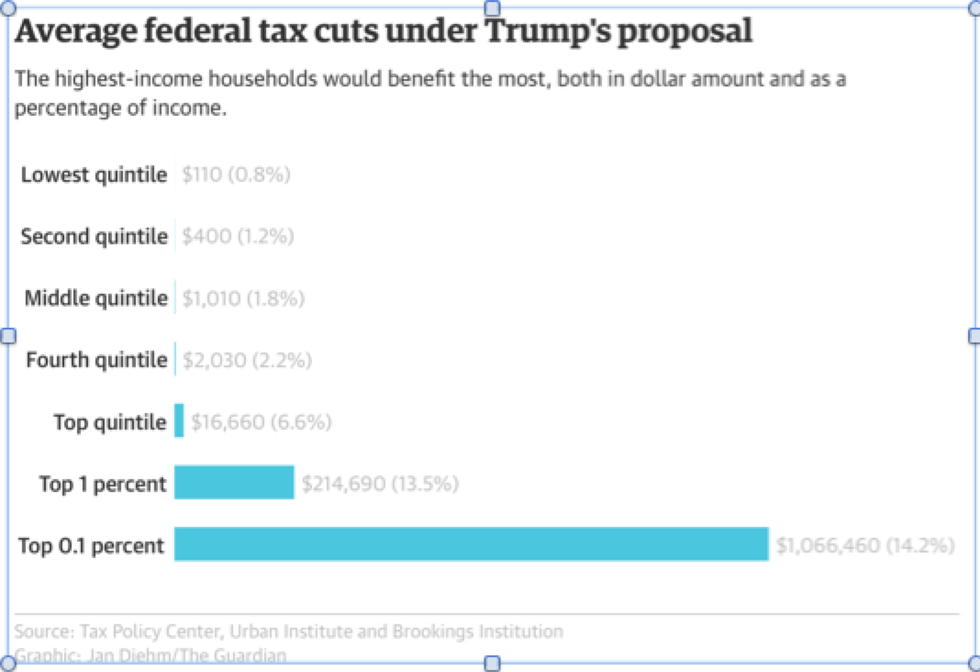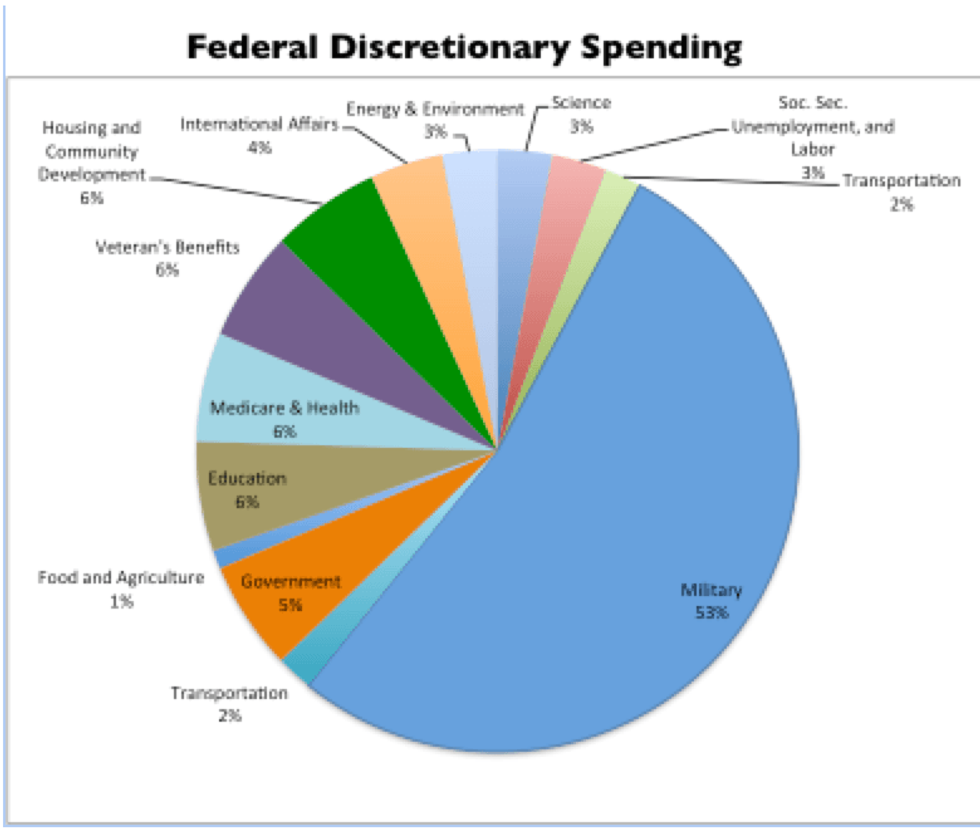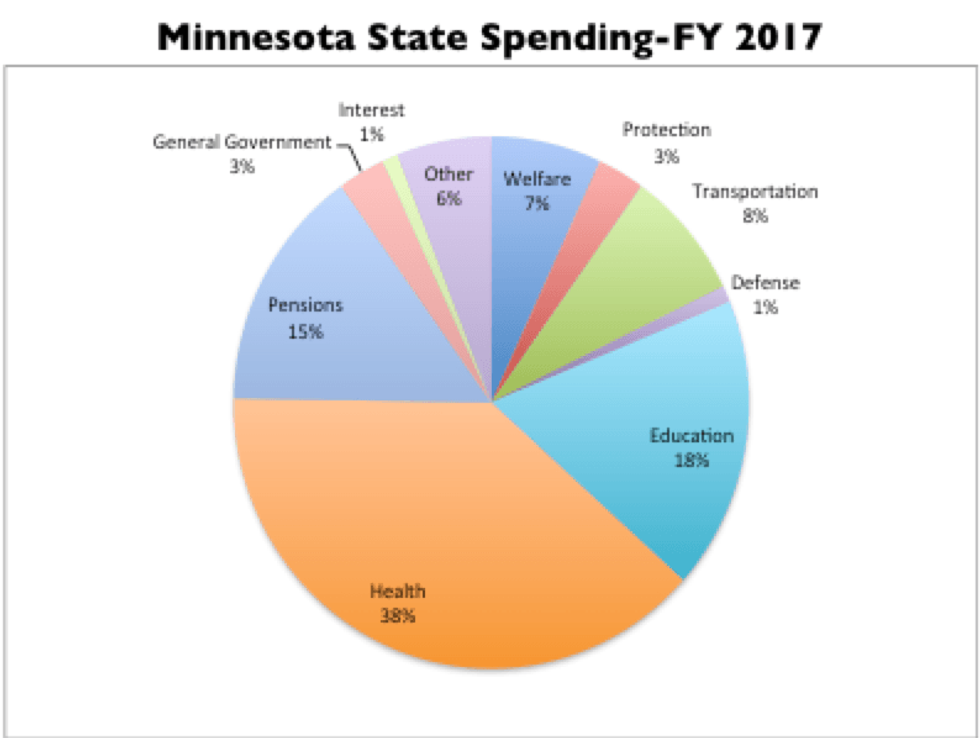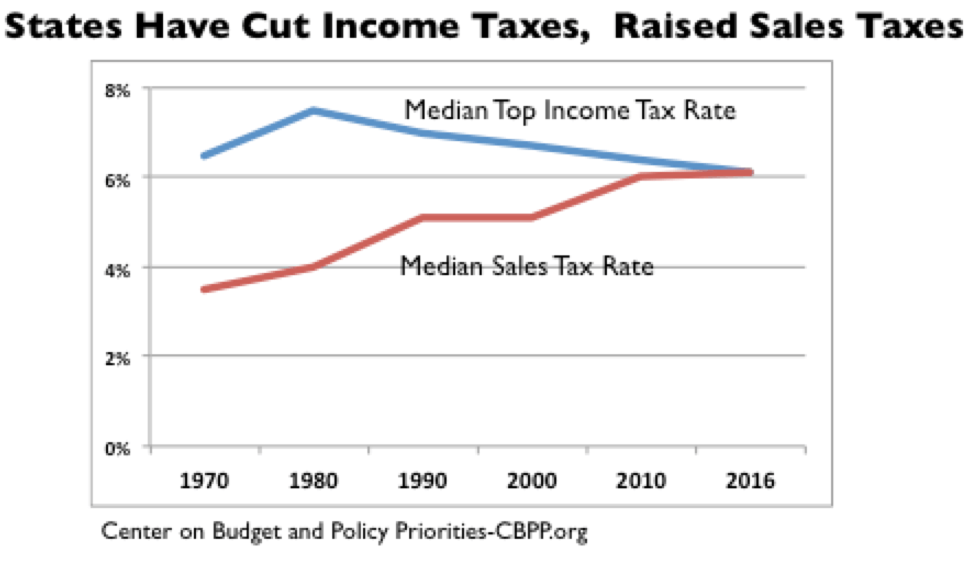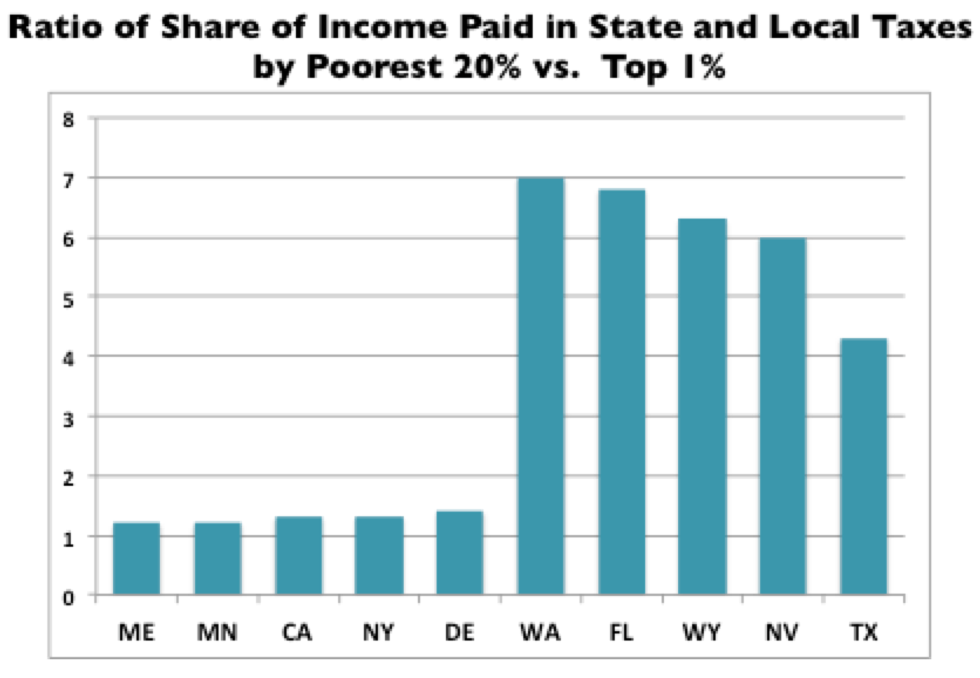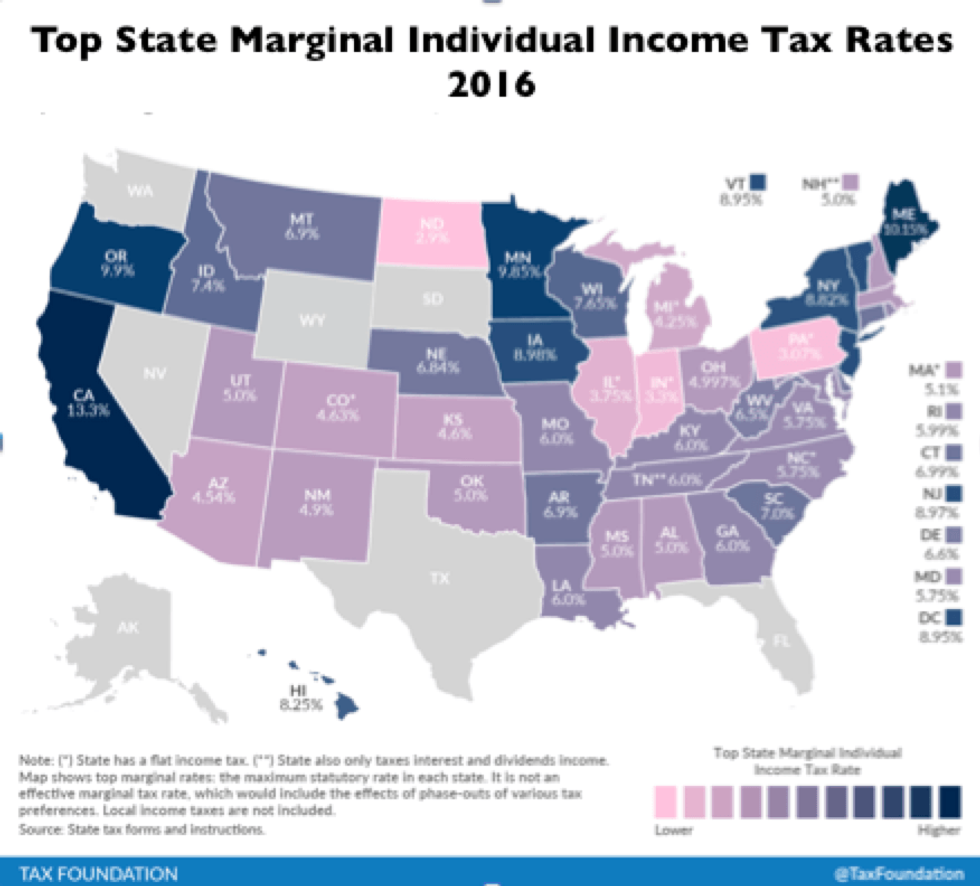 Combatting defeatism may be our single most important psychological objective in the wake of the election. We need to revive the spirit embodied in Barack Obama's vague but hopeful campaign slogan in 2008, "Yes We Can." At the federal level this is a time to expose, to educate and to resist. But at the state and local level we can act proactively to fashion strategies that both embrace progressive values and directly benefit those who mistakenly voted for Donald Trump as an economic savior. This is the first in a series of pieces focusing on what can be done.
Combatting defeatism may be our single most important psychological objective in the wake of the election. We need to revive the spirit embodied in Barack Obama's vague but hopeful campaign slogan in 2008, "Yes We Can." At the federal level this is a time to expose, to educate and to resist. But at the state and local level we can act proactively to fashion strategies that both embrace progressive values and directly benefit those who mistakenly voted for Donald Trump as an economic savior. This is the first in a series of pieces focusing on what can be done.
The Giveaway
Over the next 6-12 months Congress will almost certainly give the richest 1 percent of the population an income tax gift totaling some $75-150 billion. The 1 percent, with annual incomes averaging $1.3 million will capture 47 percent of the tax cuts for an average annual tax saving of $214,000 each, the non-partisan Tax Policy Center estimates based on Trump's proposal, which does not differ dramatically from that of the House Republicans.
"Private splendor and public squalor has never been more evident."
The top 0.1 percent, a population comprised of only 117,000 taxpayers who earn, on average $37 million a year will see their tax bill slashed by $1.3 million. The top .001 percent of taxpayers, fewer than 1400 individuals, who earn a dizzying $160 million annually, may see their bank accounts swell by some $10 million.
Profligacy is reserved for the few. For the many this Administration and Congress will be downright tightfisted. The bottom 20 percent of the population, some 80 million low income and working class people, will receive on average a $100 income tax reduction. By one estimate, given the whole package of proposed changes, almost 9 million families could see their taxes actually increase.
Adding insult to injury, the Trump tax plan would not only give the wealthy far larger dollar benefits but it actually reduces taxes on the wealthy by a greater percentage.
The Response

It will be virtually impossible to stop this unprecedented giveaway. But states can fight back. They can raise state income taxes on the rich in proportion to the reductions at the federal level, diverting as much of the massive federal tax gift as possible from the pockets of the 1 percent into public investments, public services and support for the 99 percent.
State-based campaigns that focus on progressive income taxes will illuminate the dangers of the increasing concentration of private wealth and its relationship to the increasing impoverishment of public services, wage stagnation and widespread privation. They can address fundamental questions. How are we connected? Do we have a responsibility to one another and to future generations?
Class Matters
Those who now run Washington insist the "me" should take precedence over the "we," that the private is superior to the public. Michigan Republican State House Speaker Tom Leonard, who proposes eliminating the state's income tax, already the lowest in the country, justified his stance by invoking a common meme, "This is the people's money, not ours." We need to make clear that, given the current distribution of tax breaks and the unprecedented concentration of wealth, the attitude of the 1 percent might more accurately be summarized as, "This is our money, not the peoples."
Despite the election of Donald Trump, a clear message of this election was that the American people believe that class matters. They are outraged that the top 1 percent have captured 99 percent of all new income generated since 2009 and amassed more wealth than 95 percent of the population. They understand the inherent unfairness and danger when 400 individuals have more wealth than 150 million Americans.
Bernie Sanders emphasized this unfairness and promoted a steep increase in taxes on millionaires and came within a whisker of being the Democrat's nominee. Hillary Clinton favored raising taxes on the rich and won nationally by almost 3 million votes. And at least one pre-election survey by the Rand Corporation found that over half of those intending to vote for Trump supported increasing taxes on the wealthy.
The Consequences
The tax gift to the rich will demand real sacrifice from the poor and the middle class--more closed state parks, fewer health services, overcrowded classrooms, more prison unrest. The House tax plan will reduce federal revenues by $3 trillion in the first 10 years; Trump's plan will reduce them by $9.5 trillion according to the Tax Policy Center. The Administration appears to agree with the higher estimate given that Trump's staff proposes federal spending cuts of $10.5 trillion over the next decade.
The brunt of these cuts will occur in the non-defense part of the discretionary budget, spending on Medicaid, science, veterans' benefits, food stamps, job training, health research, disaster assistance, housing assistance, national parks, roads and transit will suffer disproportionately. Indeed, Trump proposed during the campaign an increase in military aid to be "fully offset" by reduced spending on social insurance and public works.
These reductions will put even more pressure on already strapped state and municipal budgets. Federal government spending comprises, on average 30 percent of state revenues. This varies from a high of 43 percent in Mississippi to a low of 21 percent in Hawaii. Red states, where politicians rail against federal spending, are more dependent on Washington than blue states. A recent Associated Press survey found that 33 states are currently dealing with a budget shortfall or expect to confront one in the coming fiscal year.
Why Raise State Income Taxes?

The premise of state-based campaigns focusing on fairness and the obligations of citizenship is that the major problem is not a stagnating economy. The economy is growing. The problem is that all the benefits of that growth are going to a tiny portion of the population while the rest of us experience stagnating wages, declining benefits, and dwindling public services.

Within states the income dynamic mirrors that of the nation as a whole. In Arizona, according to the Center for Budget and Policy Priorities (CBPP), the top 1 percent increased their incomes by 73 percent while the bottom 99 percent saw their incomes drop by 6 percent. In Washington the difference was 142 percent to 1 percent; in Wisconsin it was 120 percent to 4 percent; and in Indiana 76 percent to zero.
Raising state income taxes and thereby diverting federal tax breaks to the wealth into state spending will arguably benefit not only that state, but also the nation. The majority of federal discretionary spending goes to the military, and in the future its proportion will likely increase. Meanwhile all state spending goes to health, education, welfare and transportation. The economic impact of military spending is far less than that of non-defense spending. Each military dollar grows the economy by 60-70 cents, according to research by Robert Barro and Charles Redlick. On the other hand, each federal dollar spent on food stamps grows the economy by $1.74 and by $1.36 if spent on general aid to state governments according to Moody's Mark Zandi.
State campaigns can also make a strong case that giving money to the rich is an ineffective and inefficient way to boost the economy.
Giving money to the rich has a similar low-yielding dynamic to spending it on the military. Since the rich spend much less of a tax cut than those of lower incomes tax cuts for high earners boost employment less than those for low earners. An analysis of the 2008 Bush stimulus cuts found that for every $1 in cuts, high income households spent 77 cents while low income spent $1.28 (The authors explain that a stimulus can increase average total spending by more than its own value, if it tips the balance for enough people to make large purchases like computers, cars that are purchased on credit.)
Taxing Labor and Capital
Congress wants to cut the tax on capital, which because of past tax cuts, already is taxed at about half the rate as income from labor. Most of us earn our income by working. The rich are different. They earn most of their money from capital, not labor. In 2007, wages and salaries accounted for only 40 percent of the income of the richest 1 percent, according to Professor Alexander Hicks. Sixty percent came from profits, dividends, interest, rent and capital gains. For the richest 0.1 percent, the figure is almost 70 percent.
Those who favor even further cuts in taxes on capital argue this will increase private savings, which will increase investment. The evidence is that it will do neither. Indeed, the Congressional Research Service has examined the issue from the opposite direction addressing the question, "What would be the impact of increasing capital gains tax rates?" It concludes that doing so "appear(s) to increase public saving and may have little or no effect on private saving. Consequently, capital gains tax increases likely have a positive overall impact on national saving and investment."
Most states tax income from capital at the same rate as income from labor. Thus raising the state income tax will raise the state tax on capital gains. In a state like California, the top tax rate on income from capital, at 13.3 percent, nearly that of the federal rate, if Republican tax proposals become law.
The False Benefit of State Tax Cuts
State tax cuts do not stimulate economic growth. They generate deficits, which because of the states' constitutional requirement to balance their budgets, results in reduced public spending, which itself reduces economic growth. According to economist Robert Lynch, "there is little evidence that state and local tax cuts--when paid for by reducing public services--stimulate economic activity or create jobs..."
Researchers at the Urban Institute and Brookings Institution conclude, "We find that states have no good reasons to believe that cuts in income tax rates will bring the desired benefits. Yet, states continue to erode their tax bases in the name of economic growth during a time when few states can afford to cut services, such as education and infrastructure repair that are critical for both businesses and households."
As Michael Leachman and Michael Mazerov of CBPP point out, the historical evidence is compelling. In the 1990s states with the biggest income tax cuts experienced job growth during the next economic cycle at an average rate only one-third as large as states with less significant or no cuts. From 2000 to 2007 four of the six states that reduced personal income taxes significantly saw their share of national employment decline. (The other two states are major oil and natural gas producers.) Since 2010, four of the five states that have enacted the largest personal income tax cuts have had slower job growth afterwards than has the nation as a whole.
Kansas is the poster child for this dynamic. After its legislature slashed personal income taxes in 2012, state revenue decreased by $1 billion a year. Newly elected Governor Sam Brownback insisted, "Our new pro-growth tax policy will be like a shot of adrenaline into the heart of the Kansas economy." Instead, since December 2012, Kansas experienced job growth of 2.4 percent compared to 6.9 percent in the rest of the nation.
Some argue that raising taxes on the rich will lead them to leave the state, resulting in a net loss in state revenue. The empirical evidence contradicts that argument. An analysis of New Jersey, a good test case because the tax increase there was large (from 6.37 to 8.97 percent) and many New Jersey residents can easily move to neighboring states, New York, Pennsylvania, Connecticut without changing where they work found little movement. Charles Varner and Cristobal Young of Stanford found that only 80 of the roughly 40,000 people who earned over $500,000 a year left New Jersey. Professor Varner observes, "the loss in revenues ... is very small compared to the revenue gain."
After an extensive review of the literature, Mazerov concludes, "No state has ever lost revenue by raising taxes on rich people."
A state-based campaign could personalize the impact of inequitable tax cuts and the resulting inequitable spending cuts. It could focus on the meaningless of additional money for billionaires and the centrality of money for a growing number of us.
Consider what has happened in Oklahoma. Oklahoma reduced its income taxes, resulting in over $1 billion a year in reduced state revenues. The wealthiest 1 percent of households cumulatively received nearly the same share of the tax cuts as the bottom 80 percent. The median Oklahoma household saw tax reductions of $228, compared to $15,519 for the average household in the top 1 percent. The bottom 20 percent of households received an average of just $4 per year.
While gaining virtually nothing from the tax cuts, the vast majority suffered from the accompanying spending reductions. The state's Medicaid agency eliminated dental services for low-income adults.
More than 7,300 families are on a waiting list for home and community-based services for those with developmental disabilities, and the wait has extended to 10 years. The number of teachers decreased, class sizes grew, and class offerings and programs were eliminated. An acute teacher recruitment and retention crisis has forced districts across the state to issue emergency certifications to under-qualified teachers or leave positions unfilled. Oklahoma's correctional facilities are operating at more than 10 percent above inmate capacity but with 30 percent less staffing, creating threats to the safety of staff, prisoners, and the public.
State Income Taxes: The Lay of the Land
In the 1970's, on average, states raised their income tax rates. In 1980 they were two times higher than sales tax rates. Beginning in the 1980s, however, states consistently lowered income taxes while raising sales taxes. Today, according to Elizabeth McNichol of CBPP, the median state sales tax rate is equal to the median state top income tax rate.

The result has been to make state and local taxes, on the whole, regressive. The share of income paid by the poorest 20 percent is twice that of the richest 1 percent. Unsurprisingly, the disparity is widest in states without an income tax. The Institute on Taxation and Economic Policy reports that Washington's working class pays seven times more taxes, as a share of income, than its super-wealthy. Maine and Minnesota's tax structures come closest to treating the poor the same as the rich. In fact, Maine's recently passed income tax surcharge on the wealthy may make it the only state that has a progressive tax system when all state and local taxes are included.

Typically, personal income taxes generate one third of state revenues in states that have an income tax. As noted above, federal spending accounts for another 30 percent of state revenues.
Forty-three states impose an income tax. Seven impose no income taxes (AK, FL, NV, SD, TX, WA and WY). Eight states have flat taxes (CO, IL, IN, MA, MI, NC, PA, UT).
Top marginal tax rates for states imposing an income tax vary by a factor of three, ranging from a low of 4.25 percent in Michigan and 4.54 percent in Arizona to 10.15 percent in Maine and 13.3 percent in California.
A History of Failure and Success
Can a campaign focusing on fairness, equity, and responsibility win? The signs are mixed.
Between 2000 and 2009 10 states raised income taxes on the wealthy. Between 2005 and 2015 about a dozen decreased them. In some cases the same state both raised and lowered income tax rates. New York, Wisconsin, New Jersey and Maine fall in that category.

In 2012, by a wide margin Californians voted to raise top tax rates by 30 percent. (Only 3 percent of taxpayers are affected.) In 2016 they voted to extend that tax hike.
In 2016, the people of Maine voted narrowly to approve a 40 percent hike in their top tax rate despite the opposition of the Governor and most political leaders. The increase will raise $142 million the first year and $12 million additionally each year thereafter.
Both California and Maine's initiatives dedicated the new money to education.
On the other hand, in 2010 Washingtonians decisively defeated an initiative to introduce a state income tax for the first time, initially imposed just on the rich. In 2011 Colorado voters just as decisively rejected an initiative to raise the income tax despite the increased revenue being dedicated to education. (In 2016 an initiative petition, targeting a modest income tax increase restricted to the rich wasn't submitted in time.)
Constitutional barriers will pose high barriers to progressive tax reform in some states. This appears to be the case in Illinois and may be the case in Colorado. Michigan's 1963 state constitution flatly states, "No income tax graduated as to rate or base shall be imposed by the state or any of its subdivisions." Louisiana, Oklahoma and California require a two-thirds favorable vote in the legislature to raise taxes, although the question can be put on the ballot by petition.
The Changing Landscape
State campaigns may be aided by the changing landscape of tax reform. In the face of deteriorating roads and overcrowded schools, even those who ideologically favor reducing taxes are conceding that increased revenues are needed. And drastic cuts in federal aid will exacerbate the problems faced by state legislators. Currently they almost always favor increasing sales taxes. For example, in recent years some 20 states have raised gas taxes to pay for sorely need infrastructure. Nevertheless, once the conversation focuses on how to tax rather than whether to tax, the discussion, but once the tax taboo is overcome, the conversation about equity and the income tax may be facilitated.
New York Governor Andrew Cuomo is promoting a tax hike for millionaires to pay for the states $3.5 billion budget deficit. Montana's Governor Steve Bullock similarly proposes a tax hike on the wealthy. Washington Governor Jay Inslee advocates a tax on capital gains. Alaskan Governor Bill Walker raised the possibility of a new state income tax to pay for that state's large budget deficit, although he recently backed off from that proposal.
Voters may be showing their dissatisfaction with continual tax cuts that result in deteriorating public services. Even in Red states. In November 2016 the Republican voters of Kansas declared their frustration with state policies that consistently cut public services to reduce deficits caused by tax giveaways to the rich. The Atlanticsummarized some aspects of that dissatisfaction, "Moderate Republican candidates ousted 14 conservative state legislators allied with the governor in primary elections across the state, while anti-Brownback contenders won nominations for open seats in another seven races."
People who ideologically oppose taxes often change their minds when their car hits a deep pothole. Or when the response time for 911 calls significantly lengthens. Or when their kids can no longer attend after school activities. Or when state parks are closed.
Private splendor and public squalor has never been more evident. While the recent election gave federal power to those who would widen the gap, state and local governments, the governments closest to the people, are where increasing needs, the perilous state of public services and the growing disparity between the super-wealthy and the rest of us, may offer fertile ground for progressive strategies that largely benefit those who voted for Trump.


